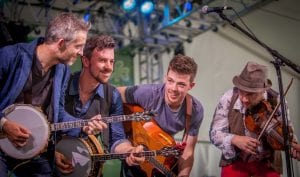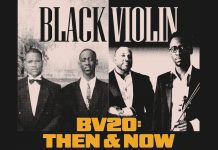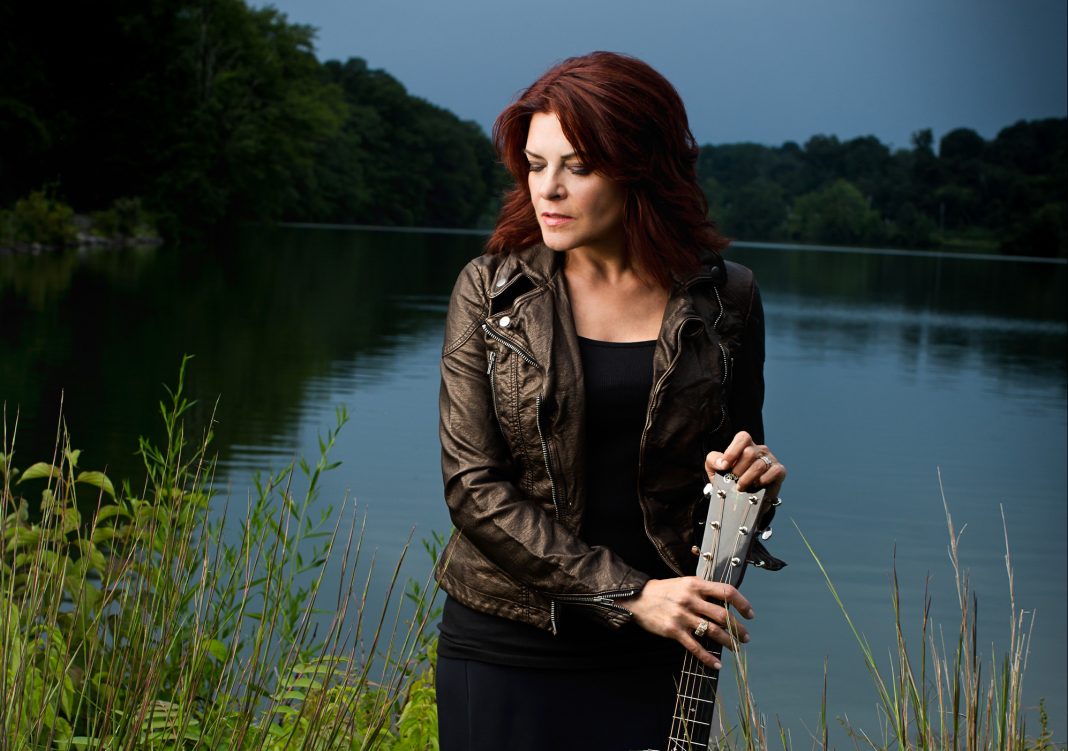Describing music by genre is subjective and sometimes even controversial. There are more than 25 commonly agreed-upon genres and within each are many subgenres and thousands of styles, subdivided by musical techniques, cultural context, content and the spirit of the music.

Many genres evolved from earlier genres. For example, rock and roll evolved from gospel and blues genres, and the blues genre evolved from traditional African folk music. So rather than separate isolated categories, the boundaries between genres are rather gray. Folk and rock have separate definitions, but folk rock contains elements common to both.
So one artist or album that you think of as “country” might self-identify as roots, gospel, Americana or just something different for every song!
Ultimately, you probably just know that sound you like and want to hear more of it, or appreciate it live. Here are some examples of what world-class live acts you can find within different genre descriptors at Mount Baker Theatre (MBT) this year!
Country and Country Rock
Country music is a term used to describe American popular music that began in the rural regions of the Southeastern United States in the 1920s. It began in southeastern American folk music, especially Appalachian folk and Western music. Blues modes have also been used extensively throughout its recorded history.
Headed to Mount Baker Theatre on Saturday, September 16, is American country music band Sawyer Brown, which was founded in Florida in 1981. The five members first worked together as part of the Don King road band, performing in the country genre in the style of Nashville sound. But Sawyer Brown is not simply country. They’ve been described as, “the Rolling Stones of country music,” and they were known for their country rock vibe well before Garth Brooks became a household name.
Although most people think of Rosanne Cash as a traditional country singer, the catalog she’ll perform at MBT with her Grammy-winning musical director, guitarist and husband John Leventhal on Friday, January 26 includes American roots songs encompassing blues, gospel, folk, country and rock. The four-time Grammy winner and member of the Nashville Songwriters Hall of Fame will present an acoustic evening that celebrates her prolific and deeply-rooted program.
Rock and Roll

Rock and Roll refers to a genre of popular music that began in the U.S. during the late 1940s and early 1950s and evolved from African American musical styles including gospel, blues, jazz, boogie woogie, rhythm and blues, and country music.
Elements of rock and roll can be heard in blues records of the 1920s and country records in the 1930s, but the genre didn’t get its name until 1954. The beat is made up of a blues rhythm with an accentuated backbeat almost always provided by a snare drum. Classic rock and roll is usually played with one or two electric guitars, a double bass or string bass or (after the mid-1950s) an electric bass guitar and a drum kit.
Rock and roll went on to spawn other genres that often lack the backbeat, now commonly known as “rock.”
Saturday, October 14 is your chance to relive your favorite songs by one of the most powerful female singers of her time, Janis Joplin. The show, A Night with Janis Joplin, tells the story of her unique, distinctive voice, emotionally honest messages and powerful, short life through Broadway-style storytelling. As a Texan performing in the mid and late 1960s, she was influenced by the great blues, soul, gospel and rock singers of her time—Aretha Franklin, Etta James, Odetta, Nina Simone and Bessie Smith. You’ll hear their contribution to her sound in songs like “Me and Bobby McGee,” “Piece of My Heart,” “Mercedes Benz,” “Cry Baby” and “Summertime.” Although her music contains elements of many genres, she is known as, “the queen of rock ‘n’ roll.”
Folk (Including Folk Rock, Celtic, Roots, Bluegrass and Acoustic)

Folk music is a genre that includes both traditional music and the more modern genre that evolved from it during the 20th century folk revival. Traditional music includes songs that have been performed over several generations, passed down through local customs, including types of dance. Although the term “folk music” originated in the 19th century, it includes music much older than that. It is a window into the cultural life of the groups that made it, including Americans of European ancestry, southern African Americans, Native Americans, Mexican-Americans and Cajuns. The folk genre was popularized in the 1960s. Some types of folk music are also called world music and the genre encompasses acoustic, bluegrass, Celtic, roots and Americana music.
Celtic music refers to both orally-transmitted traditional music of the Celtic people of Western Europe and contemporary recorded music. Americana is contemporary music that incorporates elements of various American roots music styles including country, roots-rock, folk, bluegrass, R&B and blues, resulting in a distinctive roots-oriented sound that lives in a world apart from the pure forms of the genres from which it draws.
The term “roots music” is now used to refer to a broad range of musical genres, which include blues, gospel, traditional country, zydeco, tejano and Native American pow-wow.
You can take a stroll through folk and folk rock history with one of the world’s most successful American folk rock duos through the The Simon & Garfunkel Story on Sunday, October 29. They became counterculture icons of the 1960s social revolution, alongside Joan Baez, Joni Mitchell and Bob Dylan.
Both Simon and Garfunkel were born and raised in Queens, New York. They were influenced by their love for rock n’ roll, especially the country-influenced Everly Brothers. Simon and Garfunkel first learned to harmonize together as young teens in a doo-wop band. Their original folk song, “The Sound of Silence,” made them famous only after being rereleased as folk rock in overdub, with added electric guitar and a drum kit.
You can hear the influence of both traditional folk and forms of rock n’ roll in songs like “Mrs. Robinson,” “Bridge Over Troubled Water,” “Homeward Bound,” “Scarborough Fair,” “The Boxer” and “Cecelia.” Simon & Garfunkel won 10 Grammy Awards and were inducted into the Rock and Roll Hall of Fame in 1990.
On Sunday, November 26, the husband and wife duo Béla Fleck & Abigail Washburn described by NPR’s All Things Considered as, “two monsters of the banjo,” will bring their multi-genre music to MBT. Béla Fleck is a 16-time Grammy Award winner while Abigail Washburn is a singer-songwriter and clawhammer banjo player. The pair’s self-titled debut took home the 2016 Grammy Award for Best Folk Album.
The Billboard #1 World Album-charting We Banjo 3 will return to MBT on Saturday, February 10. They consider themselves the creators of “Celtgrass” music, a combination of old-world Irish tradition and authentic Americana that continues to grow in popularity. These two sets of brothers from Galway, Ireland bring music magic with their talented, energetic performance on banjo, fiddle, guitar and mandolin.
Celtic Nights—Oceans of Hope will take you on a trip—full of Irish song and dance—on Saturday, February 24. This Broadway-style storytelling follows the brave and adventurous Irish people who left behind their families and lives, traveling across the challenging seas to new opportunity in the wilds of America and Australia.
The influence of the old music on what became American sounds is evident in this production. You’ll recognize hints of bluegrass, Appalachian, country and Western. Favorites like “Danny Boy,” “Isle of Hope,” “Whiskey in the Jar” and “My Love is in America” will have you foot tapping in your seat.
Blues (Including Boogie Woogie)
Blues evolved from African spirituals, African chants, work songs, rural fife and drum music, revivalist hymns and country dance music. The blues grew up in the Mississippi Delta just upriver from New Orleans, the birthplace of jazz.
On November 3, Shemekia Copeland & Matt Andersen take the MBT stage with great examples of contemporary blues, roots and soul music. Copeland is an internationally acclaimed singer declared by the state of Illinois as, “The New Queen of the Blues.” Multi-award-winning Matt Andersen is a powerhouse performer with a giant, soul-filled voice and commanding stage presence. He has toured worldwide, both solo and with greats such as Bo Diddley, Buddy Guy, Greg Allman and Randy Bachman.
You can see a great example of a subgenre of the blues, New Orleans Boogie Woogie, with Michael Kaeshammer on Saturday, November 18. Boogie Woogie is a form of instrumental blues, especially for piano, using melodic variations over a constantly repeated bass rhythm.
German-born and based on Vancouver Island, Kaeshammer blends jazz, boogie-woogie and classical arrangements at breakneck speeds. A stellar pianist, vocalist, composer, arranger and producer, Kaeshammer has won two Juno awards out of seven nominations and Western Canadian Music Award’s Musician of the Year and Entertainer of the Year.
Whether you want to explore a new genre or relive history through your old favorite, MBT will likely have a show that fits the bill. Reserve your seats now to see some of the world’s best renowned sounds right here in your own back yard.
Mount Baker Theatre
104 North Commercial Street
Bellingham, WA 98225
Phone: 360-733-5793
Tickets: 360-734-6080
www.mountbakertheatre.com
Sponsored







































